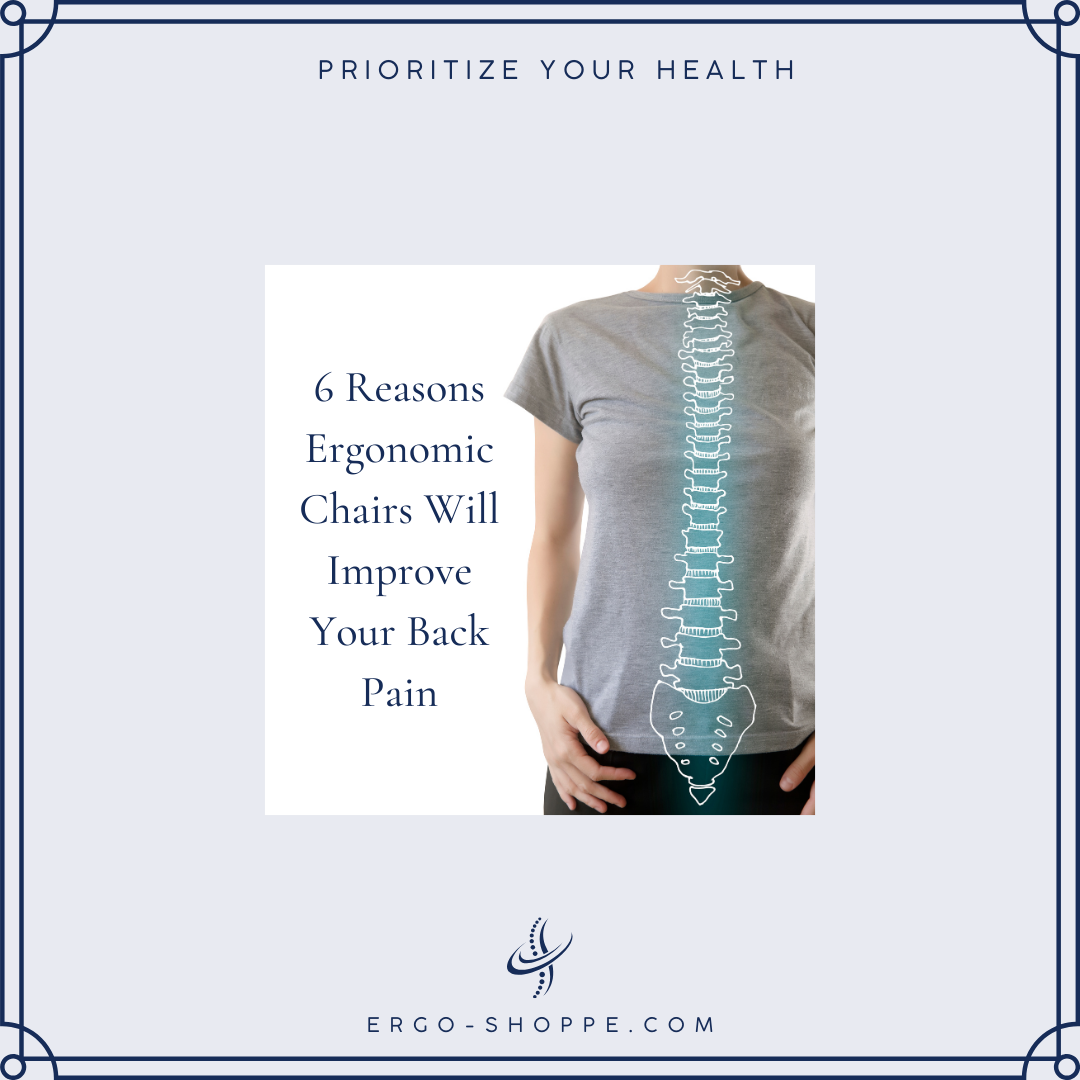
6 Reasons Ergonomic Chairs Will Improve Your Back Pain
Understanding Ergonomics and Back Pain
Have you ever been stuck in an uncomfortable chair for a long time and had to think about how to get up without hurting yourself? We've all been there. That's when ergonomics comes to the rescue! Ergonomics isn't just a fancy term; it's a science focused on making our lives easier and pain-free. Including this science in the design of chairs turns ergonomic chairs into a tool to combat back pain. If you're tired of being uncomfortable at work, read on to find out how ergonomic chairs can help.
1. Support Proper Posture:
An ergonomic chair's primary function is to reinforce the spine's natural curvature. According to the Mayo Clinic, choosing a chair that supports the spine and allows for the proper positioning of feet, thighs, and arms is critical to preventing discomfort and health problems associated with seated work, like back pain. Adjustable backrests and lumbar support can conform to the lumbar region, promoting the spine's natural 'S' curve. This reduces stress on spinal discs and back muscles. The correct adjustment of chair height and armrests helps maintain proper posture, supporting the back and aligning the shoulders, reducing the risk of musculoskeletal problems. (1)
2. Proper Hip and Pelvis Alignment:
Ergonomic chairs come with a seat tilt adjustment that helps hold the correct pelvis position, which is a fundamental aspect of spinal alignment. Aligning your hips and pelvis reduces the stress on your lower back, lessening discomfort and pain.
3. Prevent Slouching and Forward Head Posture:
The design of an ergonomic chair discourages slouching and helps maintain a neutral neck position, thus preventing the forward head posture—a common contributor to neck and upper back pain.

4. Reduce the Need for Repetitive Trunk Flexion:
The adjustability of an ergonomic chair means you're less likely to lean forward repeatedly, a motion that can lead to back pain over time. These chairs often come with swivel and height-adjustment features that keep everything you need within comfortable reach.
5. Improved Comfort:
Comfort is key in preventing back pain, and ergonomic chairs are often more comfortable than traditional office chairs. They are designed for extended use with cushioned seats and breathable fabrics that reduce heat and moisture buildup.
6. Promotes Dynamic Sitting:
An often-overlooked benefit of ergonomic chairs is their ability to encourage dynamic sitting. A well-designed chair encourages subtle movement and repositioning. This dynamic sitting engages different muscle groups and promotes circulation, reducing the stiffness and discomfort associated with static postures. Many ergonomic chairs come with features such as seat tilt and a flexible backrest that allow for this kind of gentle motion, ensuring that your back is not in a constant state of tension and helping to combat fatigue and pain.
Final Thoughts:
Investing in an ergonomic chair is investing in your health. A chair that's been "good enough" is no longer good enough. By supporting your spine's natural (neutral) alignment, these chairs can significantly improve back pain and overall comfort during your workday.
Quiz: Understanding Ergonomics and Back Pain
1. What is the primary function of an ergonomic chair?
2. Why is proper hip and pelvis alignment important in an ergonomic chair?
3. What does an ergonomic chair help prevent?
4. Which feature is important for reducing the need for repetitive trunk flexion?
5. What is a benefit of dynamic sitting promoted by ergonomic chairs?
Additional Office Chair Resources:
For more information on choosing the right ergonomic chair and optimizing your workspace for back health, consider exploring additional resources that delve into the specifics of ergonomics.
- "Office ergonomics: Your how-to guide" from Mayo Clinic offers a visual guide to making your sitting workspace more comfortable.
- "How to Choose an Ergonomic Chair" from Environmental Health and Safety at the University of Pittsburgh discusses the importance of recline ability, back support, and tracking in ergonomic chairs.
Reference
Quiz Answers:
- C) To reinforce the spine's natural curvature
- D) It reduces stress on the lower back
- C) Slouching and forward head posture
- C) Swivel and height-adjustment features
- C) Engages different muscle groups
